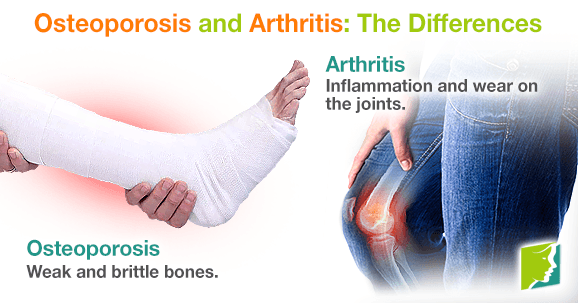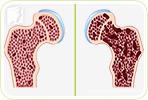Osteoporosis and arthritis are both painful diseases that affect millions of people in the United States alone. They are becoming more prevalent as the years go on, since people generally contract these conditions with age, and life expectancy is now longer than ever. For this reason, people are becoming more curious and seeking to educate themselves about the two, as they are often confused with each other.
Both osteoporosis and arthritis are far more common among women, particularly those who are going or have gone through menopause. Around 60% of individuals affected with arthritis are women, and 80% of those with osteoporosis are female.
Osteoporosis
Osteoporosis, which translates to “porous bones”, is characterized by the weakening and thinning of the bones. Many factors - whether nutritional, hormonal, or genetic - can come into play. For menopausal women, as their estrogen levels plummet, it causes a rapid degeneration of their skeleton, especially in their hips, spine, and wrists.
The decreased bone density causes frequent fracture, which can be dangerous, painful, and even lead to major surgery. The technical indication for osteoporosis is when your bone density score is less than -2.5 on a bone density test, as opposed to a healthy score, which is greater than or equal to -1.0.
Arthritis
Arthritis, on the other hand, translates to “joint inflammation”. It is a disease that can cause discomfort, pain, and even deformity in the joints, tissues surrounding the joints, and connective tissues as well. Researchers have found this condition to be common in menopausal women, although at milder levels.
There are several types of arthritis, but osteoarthritis is the one most commonly confused with osteoporosis. In this type of the disease, pain and inflammation occur because bones of the joints rub together. When cartilage - the sponge-like tissue in joints - wears down with age, it no longer acts as a buffer between the bones of the joints.
The Difference
Osteoporosis and arthritis, as you may have come to discover, are very different. Osteoporosis is specifically a condition dealing with the minimization of bone density and strength. Arthritis affects the joints, so the pain is usually limited to the knees, hands, hips, and possibly the spine. Incidentally, these are the areas where fractures are most likely to occur in osteoporosis sufferers.
A major incongruence between osteoporosis and arthritis are the signs and symptoms associated. Arthritis is often ongoing and lingering, and can cause chronic stiffness in certain areas, like the neck, for example. The stiffness can also be extremely painful and disrupt your range of motion. Also, arthritis is a risk factor of osteoporosis. On the other hand, osteoporosis causes general weakness but is most felt upon fracture, which can easily occur. Before then, it may not show symptoms, which is why it is often referred to as a “silent” disease.
Whether you or someone you love is affected by one or both of these diseases, you may know their effect on overall wellness. The joints and bones work together to help you get through your day pain-free, but when one of these common diseases impacts them, it can be upsetting and reduce mobility. Now that you have a better idea about osteoporosis and arthritis, you can properly assess which condition you are faced with and respond accordingly with the guidance of a medical professional.
Sources
- Centers for Disease Control and Prevention. (2014). Arthritis. Retrieved May 26, 2014, from http://www.cdc.gov/arthritis/basics/faqs.htm#3
- Hospital for Special Surgery. (n.d.). About Osteoarthritis - An Overview. Retrieved May 26, 2014, from http://www.hss.edu/osteoarthritis-overview.asp#.U7QeO7TNC7Q
- National Institute of Arthritis and Musculoskeletal and Skin Disease. (2010). Living with Arthritis. Retrieved May 26, 2014, from http://www.niams.nih.gov/Health_Info/Arthritis/
- National Institutes of Health Senior Health. (2014). What Is Osteoarthritis? Retrieved May 26, 2014, from http://nihseniorhealth.gov/osteoarthritis/whatisosteoarthritis/01.html
- University of Maryland Medical Center. (2012). Osteoporosis. Retrieved May 26, 2014, from http://umm.edu/health/medical/reports/articles/osteoporosis




